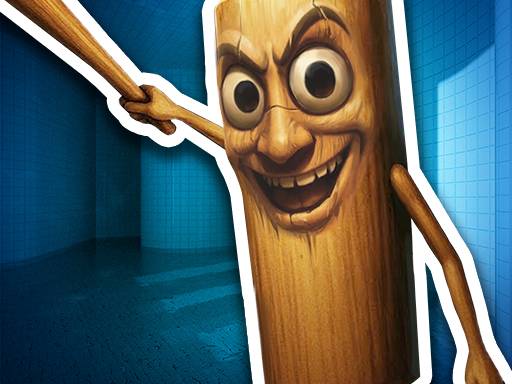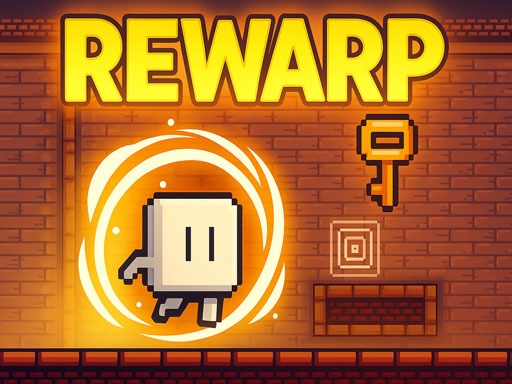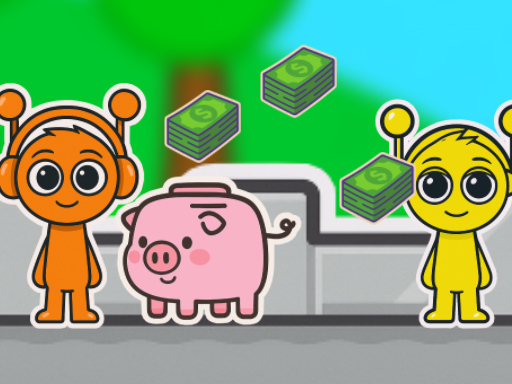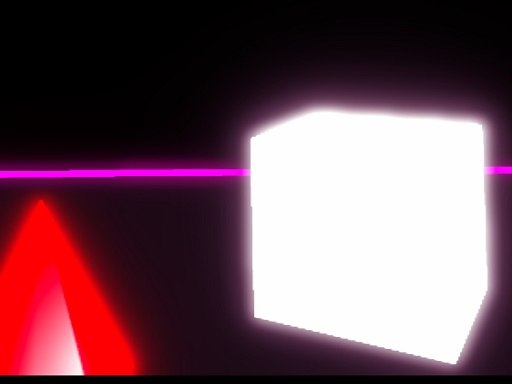Ultimate Squid Game Builder: Design Extreme Challenges
About Ultimate Squid Game Builder: Design Extreme Challenges
Dude, you are not going to *believe* what I just stumbled upon. Seriously, put down whatever you’re doing, because this is the kind of game that just devours your free time and spits you out hours later, wondering where the day went. I’m talking about Ultimate Squid Game Builder: Design Extreme Challenges, and honestly, it’s everything I never knew I needed in a game.
You know how I’ve always been drawn to games that just let you *create*? Like, not just follow a story, but actually build worlds, design systems, and then watch them come to life? There’s something magical about that, that feeling of being a puppet master, a benevolent (or not-so-benevolent) god, shaping the very fabric of an experience. Well, this game takes that core idea and just cranks it up to eleven, drenching it in that deliciously dark, high-stakes tension of Squid Game. It’s a sandbox game, pure and simple, but with a twist that just hooks you right from the start.
The premise is brilliant in its simplicity: you’re tasked with building these insane, elaborate, often deadly tests that players – your little digital contestants – have to try and survive. And get this, you’re not just a passive observer. Oh no. You can help them, you can hinder them, or, if you’re feeling particularly devious, you can absolutely, unequivocally *kill them*. The kicker? When they pass, you get money. It’s this fantastic, morally ambiguous loop of creation, observation, intervention, and profit that just scratches an itch I didn't even realize I had.
I remember firing it up for the first time, and the immediate sense of possibility was just overwhelming in the best way. You’re presented with these different maps, and honestly, even just the environments themselves are a challenge to pick from. There’s this sprawling, sun-baked desert map, all vast and open, begging for some truly epic, long-distance gauntlets. Then there’s a claustrophobic, abandoned factory, all rusted metal and flickering lights, perfect for a maze of death. And don’t even get me started on the urban ruin, with its shattered skyscrapers and precarious ledges – that one just screams for verticality and parkour-style terror. Each map isn't just a backdrop; it fundamentally changes how you approach your designs, forcing you to think about line of sight, environmental hazards, and the sheer scale of your creations.
My first build, I’ll admit, was a bit of a mess. I picked the factory map, thinking, "Okay, industrial horror, easy peasy." I started laying down these basic blocks – and there are only four types, which initially I thought, "Huh, that's it?" But then the genius of it hits you. It’s like Minecraft in its early days; the limitation forces incredible creativity. You’ve got your basic floor/wall block, a pressure-sensitive trigger block, a deadly spike trap block, and a moving platform block. That’s it. Four simple tools, and suddenly your brain starts doing acrobatics. You realize you’re not just building structures; you’re building *mechanisms*.
So, I’m in the factory, right? I start with a long corridor, thinking, "Classic." I line it with a few spike traps, linked to hidden pressure plates. Simple enough. But then I think, "What if they *see* the spikes?" So I start using the basic blocks to build these false walls, creating blind corners. Then I throw in a moving platform over a chasm, but I make it just a *little* too slow, forcing a desperate jump. I’m leaning into the screen, my heart already racing just from the *design* process. You can almost feel the cold steel of the factory floor, hear the distant echoes of unseen machinery.
Then comes the moment of truth: you unleash the players. You’ve got more than five of them, these little digital pawns, each with their own AI, their own little spark of digital life. And you get to pick from a few different guard skins, which is a nice touch for setting the mood. I went with the classic, menacing black mask, because, you know, atmosphere. Watching them enter your carefully constructed death trap is an experience unto itself. They start cautiously, looking around, sometimes even bumping into each other in confusion. You see them approach your first trap, and you’re holding your breath. Will they see the pressure plate? Will they make the jump?
What’s fascinating is how much personality these little guys develop, even without dialogue. You’ll find yourself rooting for one, cursing another for their stupidity. I had this one player, number 007, who was just a natural. He was dodging traps, timing jumps perfectly, almost like he was reading my mind. And then there was 456, who just bumbled through everything, barely surviving by sheer dumb luck. The brilliant thing about this is the dynamic intervention. 007 was about to hit a spike trap I’d forgotten to properly hide, and I just instinctively hit the "help" button, activating a temporary shield around him. He sailed right over it, and I actually let out a cheer. Conversely, 456 was about to pass a relatively easy section, and I thought, "Nah, not yet, buddy." A quick "hinder" button press, and a gust of wind knocked him off a narrow beam. He splattered. And yeah, I felt a pang of guilt, but then the game reminded me: *this is what you signed up for.*
The real magic happens when you see them pass, or fail, and the money starts rolling in. That’s the fuel for your next, even more diabolical creation. It’s not just about building; it’s about iterating, learning from your players’ successes and failures. You get a sense of accomplishment that’s unique to sandbox games, but here it’s coupled with this dark, almost mischievous glee. What I love about games like this is that they tap into that primal urge to build and destroy, to control, to experiment. In my experience, the best moments come when a strategy finally clicks into place, when you realize how to combine those four simple blocks into something truly complex and challenging.
I’ve spent hours just perfecting a single corridor, trying to make it challenging but fair enough that *somebody* can pass. You start thinking like a game designer, considering player psychology, pathfinding, risk-reward. You place a tempting coin just beyond a hidden pit, knowing full well that greed will be their downfall. You create a series of moving platforms that require precise timing, knowing that one misstep means a plunge into the abyss. You can almost feel the tension in your shoulders as you watch your players navigate these perilous pathways. The sounds of their desperate grunts, the whir of a trap springing, the satisfying *thud* of a successful jump – it all pulls you deeper into the experience.
And then you unlock more stuff with your earnings. Maybe a new map, like the serene but utterly treacherous icy tundra, where every step is a gamble on thin ice. Or perhaps a new guard skin, like the more traditional soldier, or a menacing, cloaked figure that adds a different kind of dread. It just keeps feeding that creative hunger. I mean, I’ve always been drawn to games that offer endless replayability, and this one absolutely delivers. You could spend hundreds of hours just designing and refining different challenges, trying to maximize your profits while still enjoying the spectacle of your creations.
The variation in rhythm is fantastic too. Sometimes you’re meticulously placing blocks, pixel by pixel, trying to get that perfect jump distance. Other times, you’re hitting the "start test" button and just letting chaos unfold, watching with wide eyes as your players navigate the mayhem. You’ll have these moments of intense focus, followed by bursts of laughter or groans as your plans either brilliantly succeed or spectacularly fail. It’s not just a game; it’s a laboratory for your wildest, most extreme challenge ideas.
What's interesting is how it makes you reflect on game design itself. You become acutely aware of difficulty curves, of player frustration, of the delicate balance between challenge and reward. You find yourself thinking, "How would *I* get through this?" as you’re building, and then you watch your players struggle, and you realize you might have been a bit too cruel. Or not cruel enough! This makes me wonder if I could design a truly impossible challenge that still *looks* possible, just to mess with them. The possibilities feel genuinely limitless.
Honestly, if you're into sandbox games, if you've ever secretly wished you could be the one pulling the strings in a high-stakes survival game, or if you just love the sheer creative freedom of building something from the ground up and then watching it perform, you *have* to check this out. It’s not just a game you play; it’s a game you *inhabit*. You become the architect of fate, the master of the challenge, and it’s an incredibly satisfying, sometimes even unsettling, feeling. Trust me, you'll be leaning forward in your chair, ready to grab that controller and start building your own ultimate death games the moment you hear about it. It's that good.
You know how I’ve always been drawn to games that just let you *create*? Like, not just follow a story, but actually build worlds, design systems, and then watch them come to life? There’s something magical about that, that feeling of being a puppet master, a benevolent (or not-so-benevolent) god, shaping the very fabric of an experience. Well, this game takes that core idea and just cranks it up to eleven, drenching it in that deliciously dark, high-stakes tension of Squid Game. It’s a sandbox game, pure and simple, but with a twist that just hooks you right from the start.
The premise is brilliant in its simplicity: you’re tasked with building these insane, elaborate, often deadly tests that players – your little digital contestants – have to try and survive. And get this, you’re not just a passive observer. Oh no. You can help them, you can hinder them, or, if you’re feeling particularly devious, you can absolutely, unequivocally *kill them*. The kicker? When they pass, you get money. It’s this fantastic, morally ambiguous loop of creation, observation, intervention, and profit that just scratches an itch I didn't even realize I had.
I remember firing it up for the first time, and the immediate sense of possibility was just overwhelming in the best way. You’re presented with these different maps, and honestly, even just the environments themselves are a challenge to pick from. There’s this sprawling, sun-baked desert map, all vast and open, begging for some truly epic, long-distance gauntlets. Then there’s a claustrophobic, abandoned factory, all rusted metal and flickering lights, perfect for a maze of death. And don’t even get me started on the urban ruin, with its shattered skyscrapers and precarious ledges – that one just screams for verticality and parkour-style terror. Each map isn't just a backdrop; it fundamentally changes how you approach your designs, forcing you to think about line of sight, environmental hazards, and the sheer scale of your creations.
My first build, I’ll admit, was a bit of a mess. I picked the factory map, thinking, "Okay, industrial horror, easy peasy." I started laying down these basic blocks – and there are only four types, which initially I thought, "Huh, that's it?" But then the genius of it hits you. It’s like Minecraft in its early days; the limitation forces incredible creativity. You’ve got your basic floor/wall block, a pressure-sensitive trigger block, a deadly spike trap block, and a moving platform block. That’s it. Four simple tools, and suddenly your brain starts doing acrobatics. You realize you’re not just building structures; you’re building *mechanisms*.
So, I’m in the factory, right? I start with a long corridor, thinking, "Classic." I line it with a few spike traps, linked to hidden pressure plates. Simple enough. But then I think, "What if they *see* the spikes?" So I start using the basic blocks to build these false walls, creating blind corners. Then I throw in a moving platform over a chasm, but I make it just a *little* too slow, forcing a desperate jump. I’m leaning into the screen, my heart already racing just from the *design* process. You can almost feel the cold steel of the factory floor, hear the distant echoes of unseen machinery.
Then comes the moment of truth: you unleash the players. You’ve got more than five of them, these little digital pawns, each with their own AI, their own little spark of digital life. And you get to pick from a few different guard skins, which is a nice touch for setting the mood. I went with the classic, menacing black mask, because, you know, atmosphere. Watching them enter your carefully constructed death trap is an experience unto itself. They start cautiously, looking around, sometimes even bumping into each other in confusion. You see them approach your first trap, and you’re holding your breath. Will they see the pressure plate? Will they make the jump?
What’s fascinating is how much personality these little guys develop, even without dialogue. You’ll find yourself rooting for one, cursing another for their stupidity. I had this one player, number 007, who was just a natural. He was dodging traps, timing jumps perfectly, almost like he was reading my mind. And then there was 456, who just bumbled through everything, barely surviving by sheer dumb luck. The brilliant thing about this is the dynamic intervention. 007 was about to hit a spike trap I’d forgotten to properly hide, and I just instinctively hit the "help" button, activating a temporary shield around him. He sailed right over it, and I actually let out a cheer. Conversely, 456 was about to pass a relatively easy section, and I thought, "Nah, not yet, buddy." A quick "hinder" button press, and a gust of wind knocked him off a narrow beam. He splattered. And yeah, I felt a pang of guilt, but then the game reminded me: *this is what you signed up for.*
The real magic happens when you see them pass, or fail, and the money starts rolling in. That’s the fuel for your next, even more diabolical creation. It’s not just about building; it’s about iterating, learning from your players’ successes and failures. You get a sense of accomplishment that’s unique to sandbox games, but here it’s coupled with this dark, almost mischievous glee. What I love about games like this is that they tap into that primal urge to build and destroy, to control, to experiment. In my experience, the best moments come when a strategy finally clicks into place, when you realize how to combine those four simple blocks into something truly complex and challenging.
I’ve spent hours just perfecting a single corridor, trying to make it challenging but fair enough that *somebody* can pass. You start thinking like a game designer, considering player psychology, pathfinding, risk-reward. You place a tempting coin just beyond a hidden pit, knowing full well that greed will be their downfall. You create a series of moving platforms that require precise timing, knowing that one misstep means a plunge into the abyss. You can almost feel the tension in your shoulders as you watch your players navigate these perilous pathways. The sounds of their desperate grunts, the whir of a trap springing, the satisfying *thud* of a successful jump – it all pulls you deeper into the experience.
And then you unlock more stuff with your earnings. Maybe a new map, like the serene but utterly treacherous icy tundra, where every step is a gamble on thin ice. Or perhaps a new guard skin, like the more traditional soldier, or a menacing, cloaked figure that adds a different kind of dread. It just keeps feeding that creative hunger. I mean, I’ve always been drawn to games that offer endless replayability, and this one absolutely delivers. You could spend hundreds of hours just designing and refining different challenges, trying to maximize your profits while still enjoying the spectacle of your creations.
The variation in rhythm is fantastic too. Sometimes you’re meticulously placing blocks, pixel by pixel, trying to get that perfect jump distance. Other times, you’re hitting the "start test" button and just letting chaos unfold, watching with wide eyes as your players navigate the mayhem. You’ll have these moments of intense focus, followed by bursts of laughter or groans as your plans either brilliantly succeed or spectacularly fail. It’s not just a game; it’s a laboratory for your wildest, most extreme challenge ideas.
What's interesting is how it makes you reflect on game design itself. You become acutely aware of difficulty curves, of player frustration, of the delicate balance between challenge and reward. You find yourself thinking, "How would *I* get through this?" as you’re building, and then you watch your players struggle, and you realize you might have been a bit too cruel. Or not cruel enough! This makes me wonder if I could design a truly impossible challenge that still *looks* possible, just to mess with them. The possibilities feel genuinely limitless.
Honestly, if you're into sandbox games, if you've ever secretly wished you could be the one pulling the strings in a high-stakes survival game, or if you just love the sheer creative freedom of building something from the ground up and then watching it perform, you *have* to check this out. It’s not just a game you play; it’s a game you *inhabit*. You become the architect of fate, the master of the challenge, and it’s an incredibly satisfying, sometimes even unsettling, feeling. Trust me, you'll be leaning forward in your chair, ready to grab that controller and start building your own ultimate death games the moment you hear about it. It's that good.
Enjoy playing Ultimate Squid Game Builder: Design Extreme Challenges online for free on Latoosm. This Arcade game offers amazing gameplay and stunning graphics. No downloads required, play directly in your browser!
How to Play
larr rarr or AD - Right Left uarr or W - Jump Q - Change block S - Place block F - Shoot with machine gun After you build the test dont forget to click on the green button in the upper left corner





Comments
This game is awesome! I love the graphics and gameplay.
One of the best games I've played recently. Highly recommended!